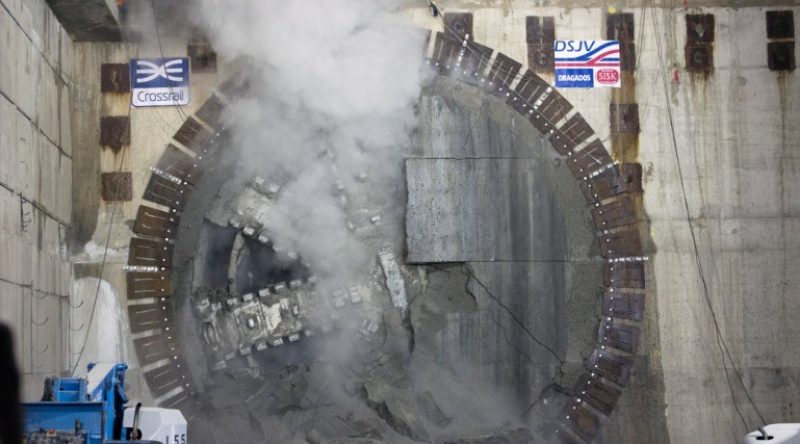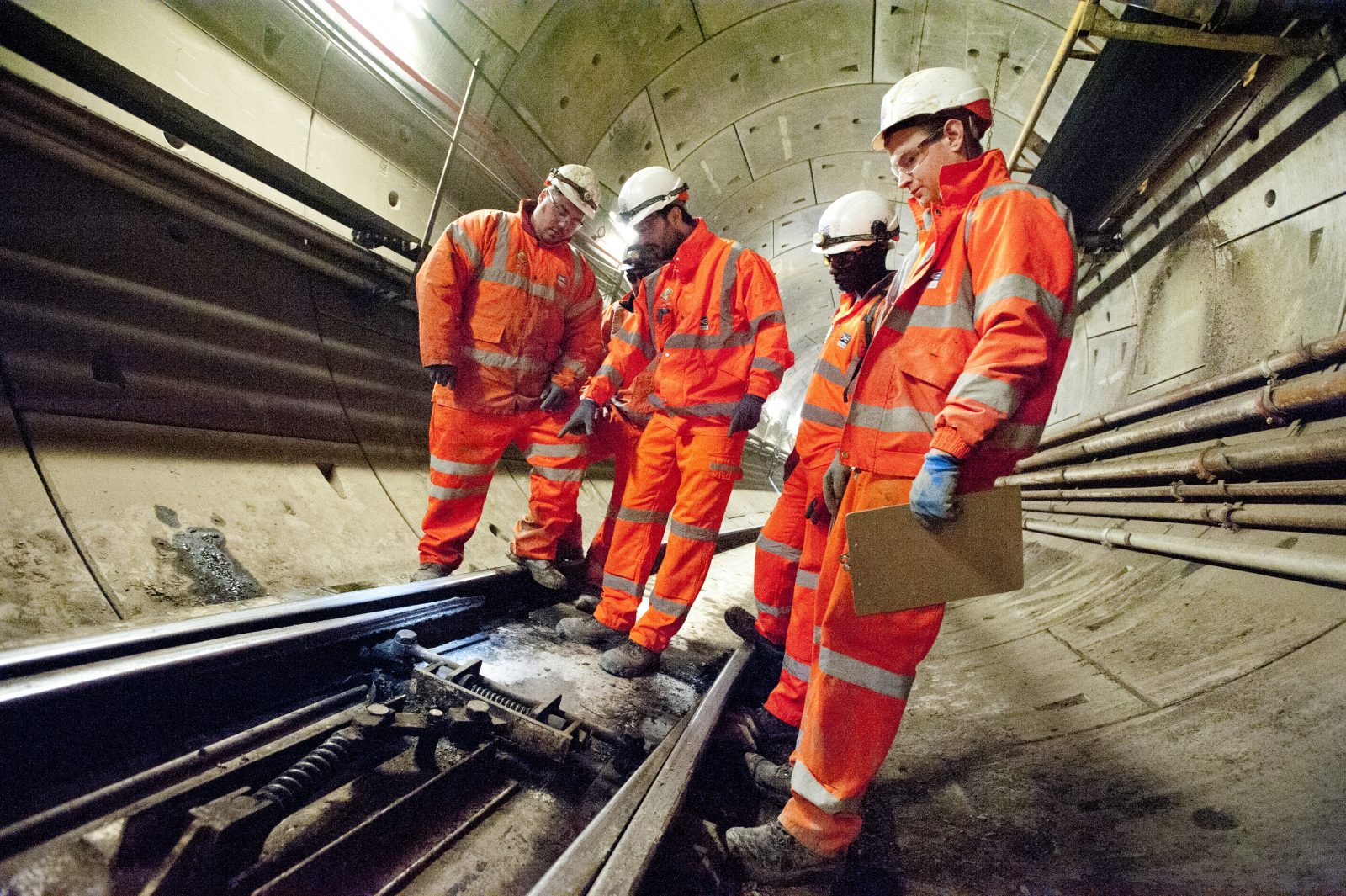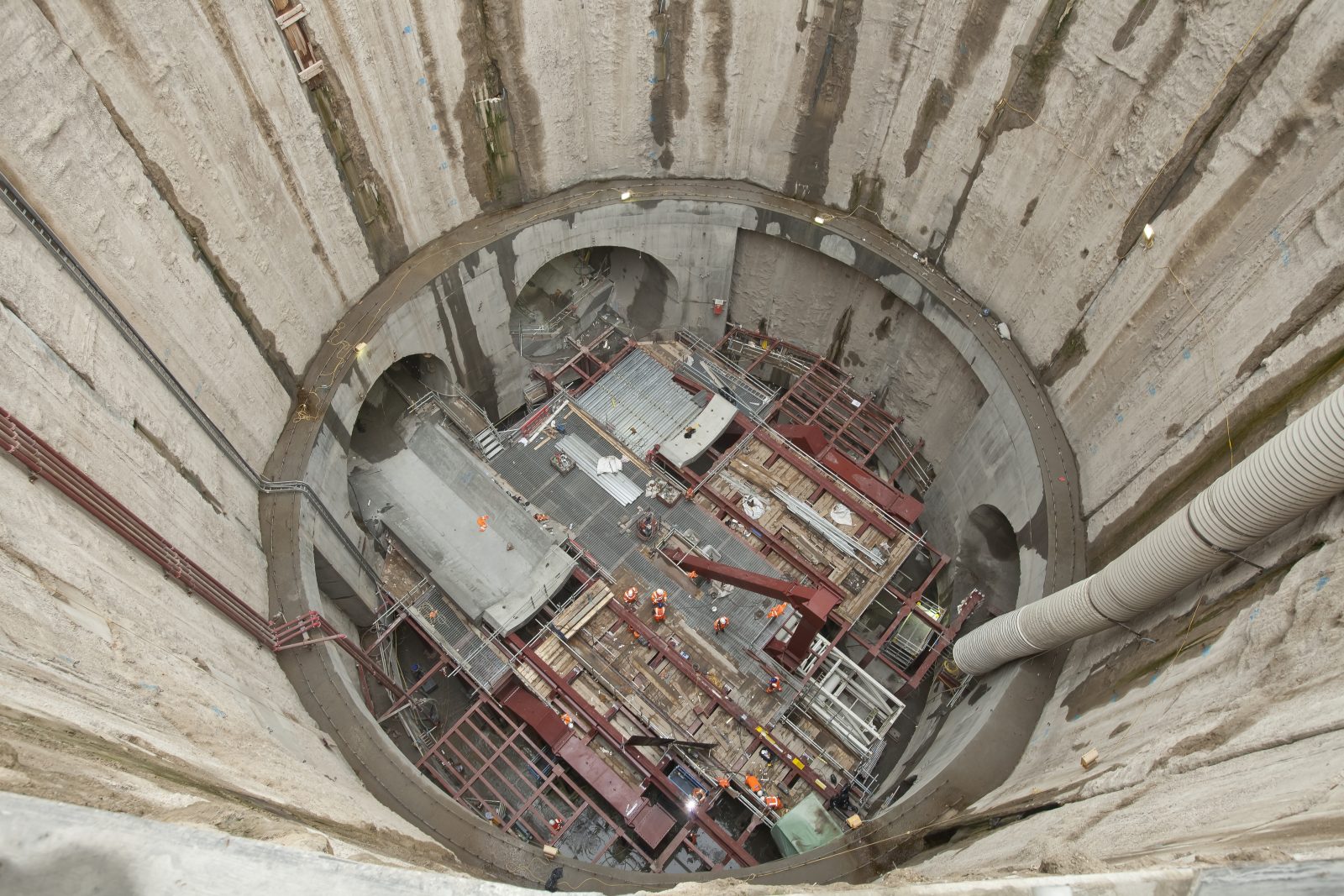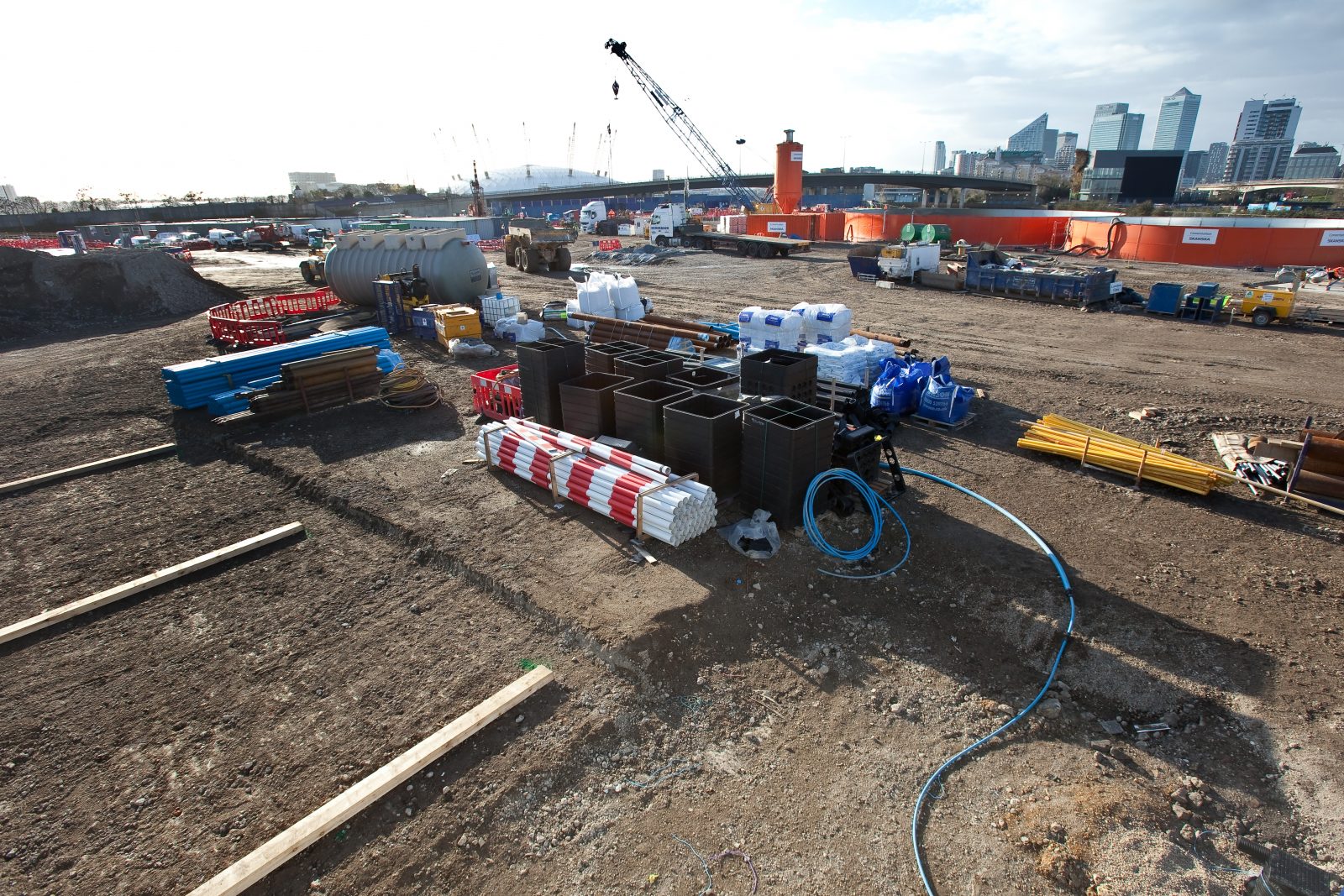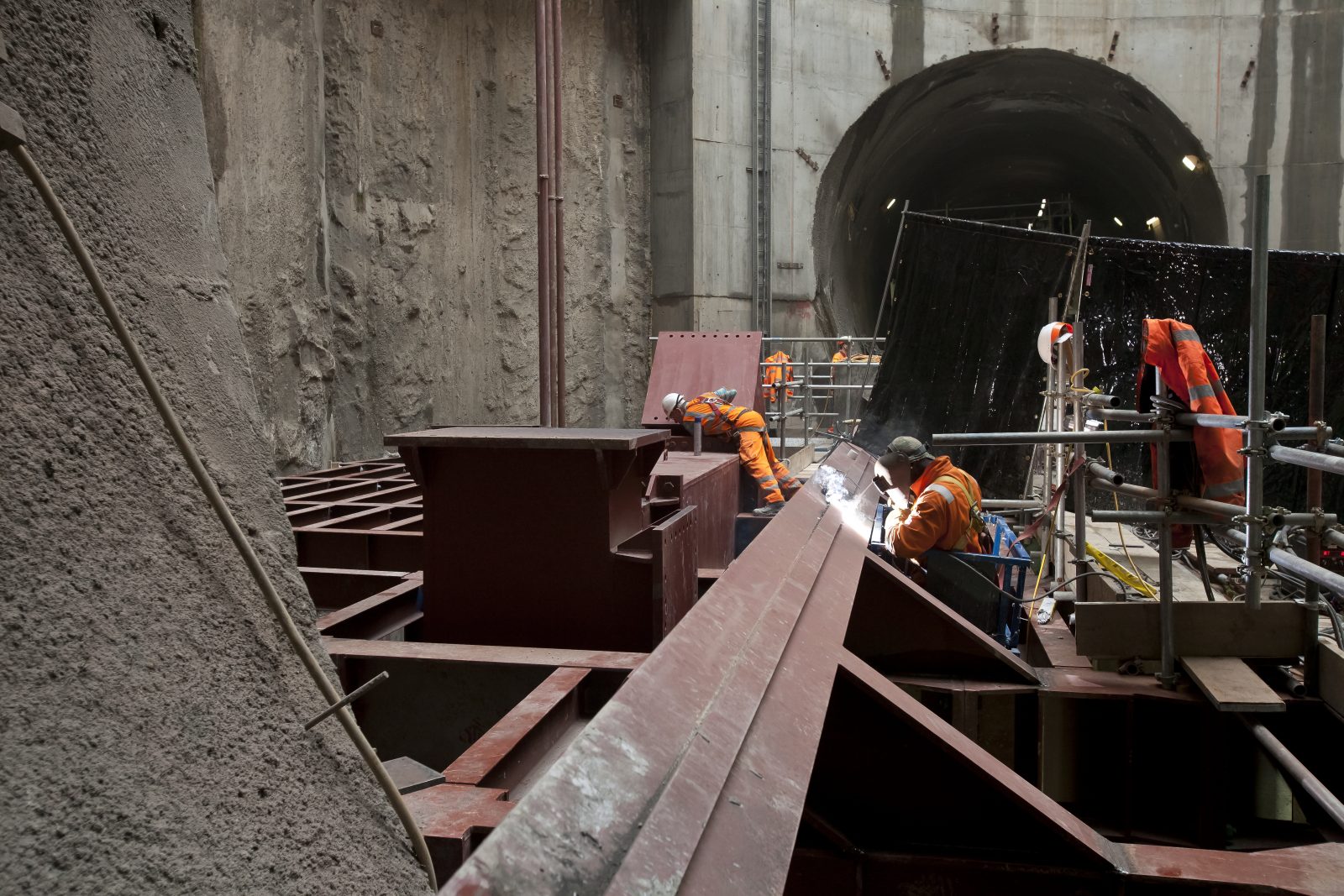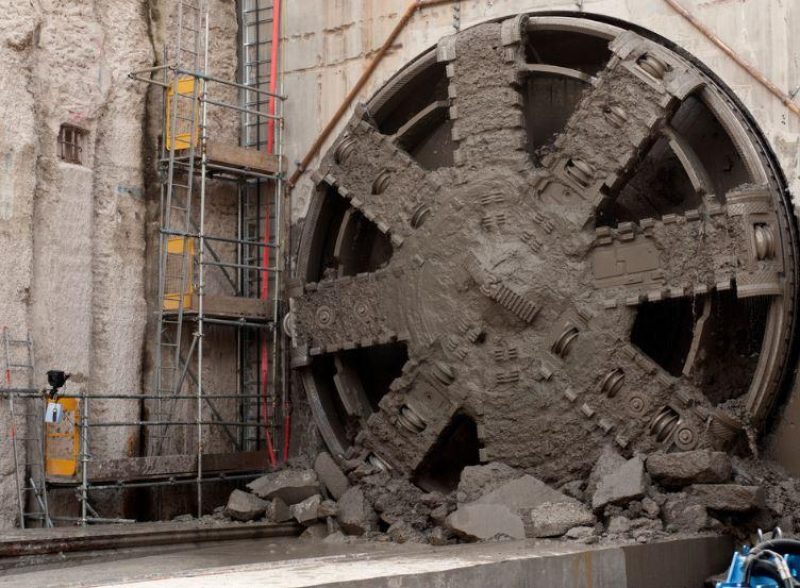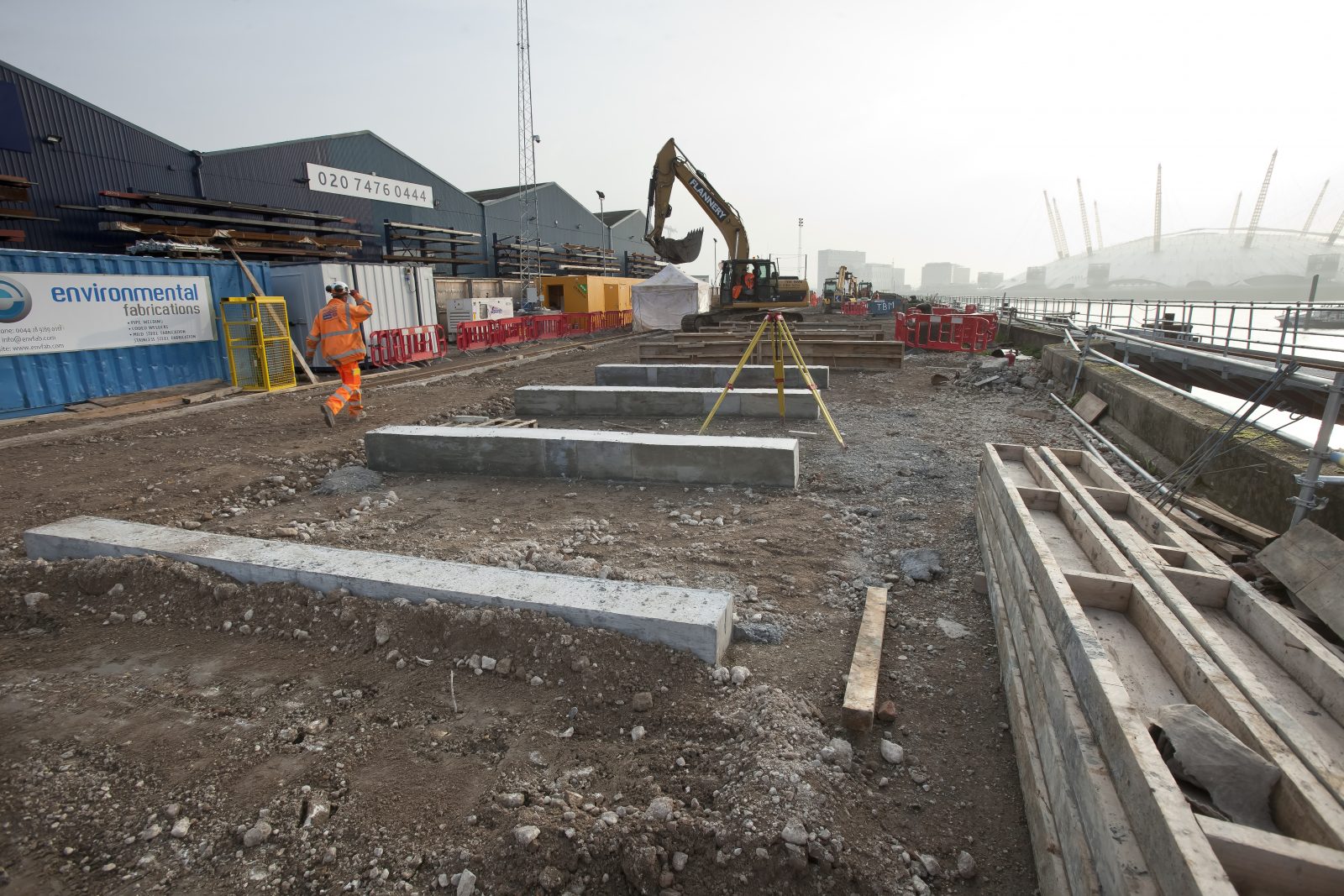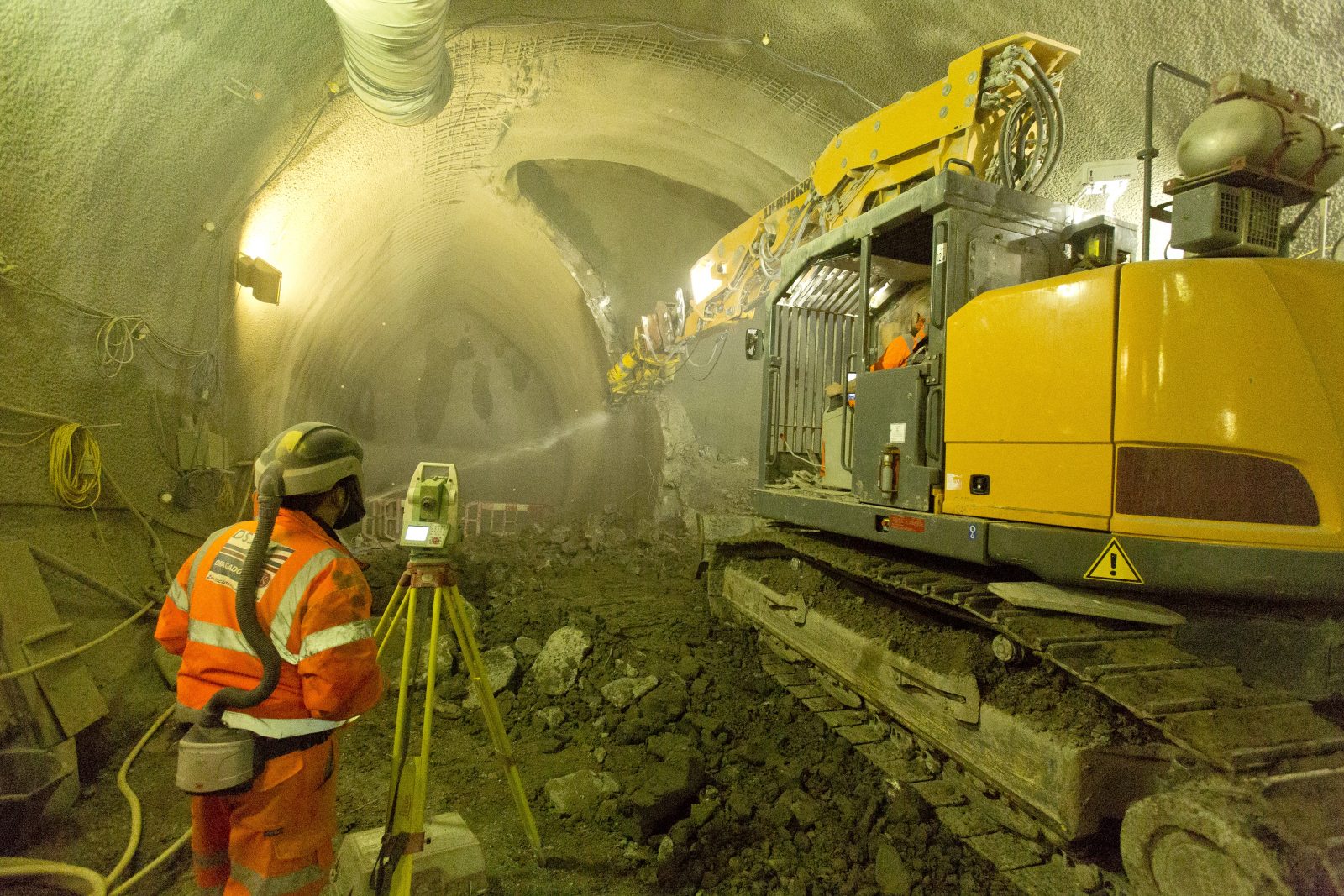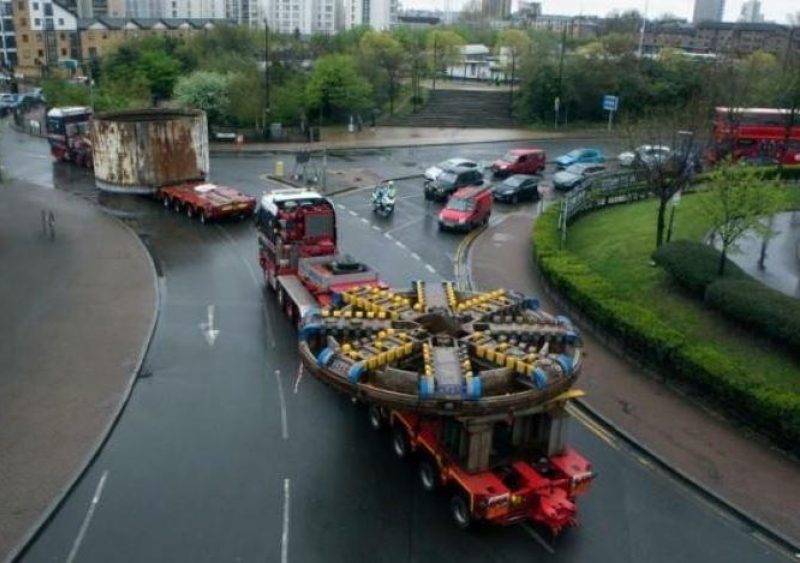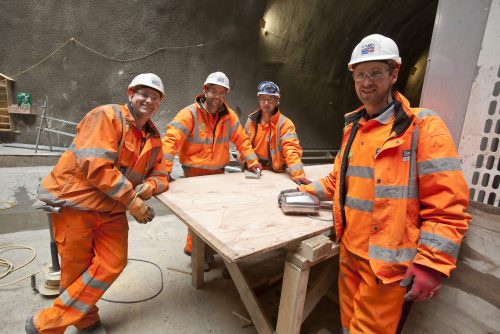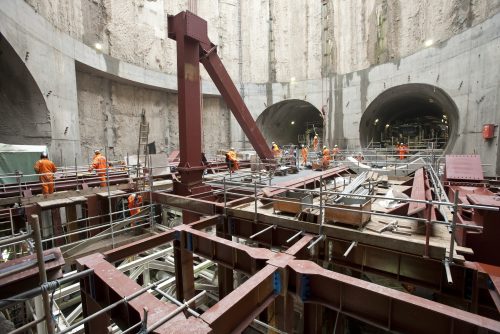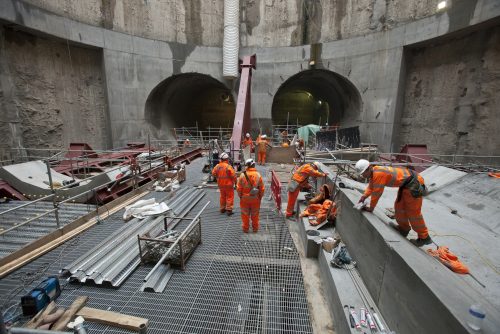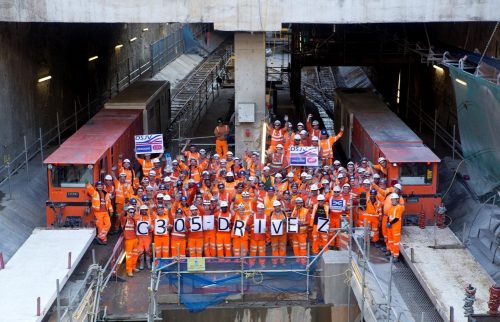Transforming London
Dragados Sisk Joint Venture (DSJV) was responsible for the construction of 23km twin bore tunnels running from Victoria Dock in the east to the new Crossrail Farrington station in Central London. With a leg of tunnels splitting off between Stepney Green to Pudding Mill Lane.
Other works included establishing a PCC segment factory in Chatham produced 113,000 tunnel segments that were shipped from Chatham Dock to Limmo Wharf.
This also included the design and construction of a new 200m-long marine berthing facility at Instone Wharf, located on the River Lea where it enters the River Thames, to be capable of handling approximately two 85m-long vessels. The facility was used for exporting approx. 1 million m3 of excavated tunnel material by self-propelled vessels.
We have a proven capability in the rail sector across Ireland and the UK
Challenges
Crossrail's largest tunnelling scheme was awarded to the joint venture company (DSJV) formed between John Sisk & Son and Dragados, a partnership which combined our expertise to deliver design and programme benefits for both client and future passengers alike.
Known as “C305”, the project contract required the construction of 11.9km of twin bore tunnels. Known as the Eastern Running Tunnels, from London’s Limmo Peninsula to Farringdon and Victoria Dock, and from Stepney Green to Pudding Mill Lane.
The contract included bored tunnels, sprayed concrete lined (SCL) tunnels, diaphragm wall shafts, segment manufacturing facility, spoil handling conveyor systems, and a 200m long berth and ship-loading facility for soil removal by marine transportation.
Our experience includes stations, track installation and light rail projects
Diaphragm walls shafts & sheet pile cofferdams
Extensive collaboration with DLR (Docklands Light Railway) personnel at all stages of our process, from initial concept and methods of working onwards, was successfully implemented, allowing the construction of the diaghram wall shafts and steel sheetpiled cofferdam adjacent to the DLR.
A cofferdam is an enclosure built within, or in pairs across, a body of water to allow the enclosed area to be pumped out. This pumping creates a dry work environment for the work to be carried out.
of excavated material beneficially reused
million tonnes of material excavated during construction
million additional people to access central London within 45 minutes when the railway fully opens
Berthing facility
Construction of the berthing facility was completed using steel tubular piles and included 18m-long OD610x10mm crane beam bearing piles, 22.5m-long OD1220x25mm cantilever fender piles, and a section of cantilever sheet pile retaining wall using 40 number 15m-long AZ36 piles (380m2).
Sheetpile walls are retaining walls constructed to retain earth, water or any other filling materials. Deadman anchor walls are thinner in section compared to masonry walls.
Technology
Crossrail’s eight tunnelling machines were manufactured by Herrenknecht in Germany and shipped to the UK in parts for re-assembly before use. Six of these were earth pressure balance tunnelling machines for digging through London clay, sand and gravel, while the remaining two were mix shield slurry machines for tunnelling through the wet chalk and flint beneath the River Thames.
"This is a major milestone in the most ambitious rail project this country has seen for decades. The Crossrail project showcases British engineering at its best, and I congratulate everyone involved in this impressive achievement."
Protecting the welfare of future generations is reflected in our approach to sustainability
Social value
Seven million tonnes of material were excavated during the construction of Crossrail, 3.4 million of which were excavated by the eight tunnelling machines. Overall, 98% of all excavated material was re-used.
In a landmark partnership with the Royal Society for the Protection of Birds (RSPB), three million tonnes of this excavated material was used to create the Wallasea Island Wild Coast Project - a flagship wetland nature reserve twice the size of the City of London - at Wallasea Island in Essex.
TBM naming competition
A total of eight tunnel boring machines were used to build 26 miles (42km) of tunnels beneath London to form the central section of the Crossrail route. The TBM’s are traditionally named after women and in May 2013 Crossrail launched the TBM naming competition to name the last two remaining TBM’s on the Z drive. DSJV jumped at the chance to get the local residents of East London involved in this competition and contacted numerous schools within East London inviting them to enter this competition themed ‘Modern day Heroes’.
The winning names were Jessica and Ellie after the Olympic Heptathlon Champion Jessica Ennis and the Paralympic gold medallist swimmer Ellie Simmonds.
"The work looks absolutely first class. Please pass on my thanks to Sisk. This previously dangerous asset has now been made safe for the travelling public and staff alike."
Stakeholder engagement
Sisk was responsible for obtaining the Port of London Authority approval for the jetty works and spoil removal solutions. Working in Central London, with the major local impacts which that entails, Sisk’s full community engagement team amended works activities to take account of any community concern.
This included the use of barges to remove tunnel spoil and minimise traffic impacts, and location of the segment batching plant to allow deliveries via the River Lea, with the site converted to an inner city farm (based on local community consultations) after works were completed.

